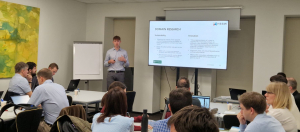LAURA CASTRO
XYZ Specialist
Lorem ipsum dolor sit amet, consectetuer adipiscing elit, sed diam nonummy nibh euismod tincidunt ut laoreet dolore magna aliquam erat volutpat. Ut wisi enim ad minim veniam, quis nostrud exerci tation
-
HOME
-
WORK
-
BATTERY TECHNOLOGIES
-
CIRCULAR ECONOMY
-
DIGITAL MANUFACTURING TOOLS
-
ELECTRIC DRIVES
-
HYDROGEN SYSTEMS
-
MANUFACTURING STRATEGY
-
MANUFACTURING ENGINEERING
-
SUPPLY CHAIN & LOGISTICS
-
LEAN MANUFACTURING & AUTOMATION
-
INSIGHTS
-
BLOGPOSTS
-
REPORTS
-
CASE STUDIES
-
COMPANY NEWS
-
EVENTS
-
TEAM
-
CAREERS
-
CONTACT
-
REQUEST A DEMO

CASE STUDIES
Building Towards a Co-located Battery Assembly and Remanufacture Facility with Ultramax
/0 Comments/in Uncategorized /by Emily Laver
Ultramax is one of the leading manufacturers of batteries in the UK, operating for over 15 years. The company operates two battery manufacturing plants – one in the UK and one in Dongguan, China.
Clients from across the automotive, off-highway, and energy storage sectors use Ultramax products and the company has to respond to each of the sector’s specific requirements. Realising the benefits and importance of having a closed-loop system, Ultramax envisioned its second UK-based plant to be a Gigawatt Hour scale facility, which would both assemble and remanufacture various types of battery modules and packs.
Is It Even Feasible?
Ultramax was interested in running a study to ascertain whether this would be feasible. They contacted HSSMI and together applied and secured funding from the Advanced Propulsion Centre’s Automotive Transformation Fund to conduct a study called Li-BAR. The novelty of this project came from integrating two typically separate functions – assembly and end-of-life services – into the same facility.
The development of a scale-up and installation strategy encountered two obstacles. First, Ultramax’s varied product range presented a complex challenge of understanding the capital and operational expenditure associated with each production line. A second roadblock came from the supplier side. It was difficult to obtain data from suppliers, who are typically inundated with requests for information (RFIs) due to the rapid expansion of the industry globally.
Getting All the Necessary Data – From Module Specifications to Equipment Suppliers, Line Layouts and a Digital Model
HSSMI developed seven product prototypes tailored to a variety of industries, including automotive and energy storage, as well
as a generic product for remanufacturing. This helped define module and pack specifications, assembly processes, Bill of Materials, Bill of Sequences, and process equipment for each.
With this information on hand, it was possible to engage efficiently with various equipment suppliers for automated module assembly lines, and test machines.
Subsequently, pack assembly line concepts were created by HSSMI to pair with the automated module assembly lines. The requirements for materials, labour, footprint, and utilities, were then calculated for each line.
To complete the facility data, logistics and warehousing concepts were modelled and costed. Indirect labour and infrastructure requirements were also explored and defined.
This data was fed into a flexible facility cost model which enabled complex scenario analysis. Within the model, it was critical to enable variability of pack design, production volumes, material cost, and other variables, to help identify drivers of a feasible business case, and to understand which product(s) would be most profitable and why. Different analytics tools were developed to support this, including minimum product pricing, forecasting, and comparison with industry benchmarks.
A New Facility to Launch By 2023
The study enabled Ultramax to assess the associated costs and facility requirements for multiple product and production mix scenarios. This played a significant role in developing a scale up strategy and business case for Ultramax. The model developed by HSSMI will continue to support business decisions, understand the necessary level of investment, and provide confidence in Ultramax’s future direction far beyond the end of the project. Ultramax is now well on its way to establishing a new UK-based facility by 2023.
This work was carried out as part of Li-BAR, which was a collaborative project between Ultramax and HSSMI, carried out with funding from Innovate UK and the Automotive Transformation Fund.
CONTACT US
Contact us today for a short initial conversation on how HSSMI can help your organisation achieve its strategic goals.




















































































































































































